Schmidt hammer: characteristics and tips for use

Schmidt's hammer was invented back in 1948, thanks to the work of a scientist from Switzerland - Ernest Schmidt. The advent of this invention made it possible to measure the strength of concrete structures in the area where construction is being carried out.
Features and purpose
Today, there are several methods of testing concrete for strength. The basis of the mechanical method is to control the relationship between the strength of concrete and its other mechanical properties. The determination procedure by this method is based on chips, tear resistance, hardness at the moment of compression. All over the world, the Schmidt hammer is often used, with the help of which the strength characteristics are determined.
This device is also called a sclerometer. It allows you to correctly check the strength, as well as to inspect reinforced concrete and concrete walls.
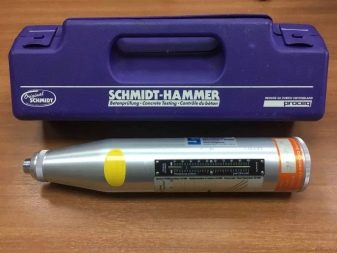
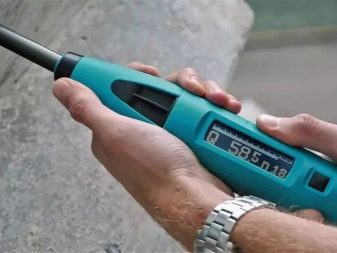
The hardness tester has found its application in the following areas:
- measuring the strength of a concrete product, as well as a mortar;
- assists in identifying weak points in concrete products;
- allows you to control the quality of the finished object that is assembled from concrete elements.
The range of the meter is quite wide. The models may differ depending on the characteristics of the tested items, for example, thickness, size, impact energy. Schmidt hammers can cover concrete products in the range of 10 to 70 N / mm². And also the user can purchase an electronic instrument for measuring the strength of concrete ND and LD Digi-Schmidt, which work automatically, displaying the measurement results on the monitor in digital form.
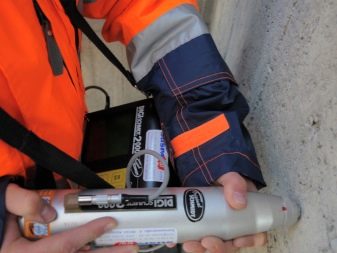

Device and principle of operation
Most sclerometers are constructed of the following elements:
- impact plunger, indenter;
- frame;
- sliders that are equipped with rods for guiding;
- cone at the base;
- stopper buttons;
- rods, which ensures the directionality of the hammer;
- caps;
- connector rings;
- back cover of the device;
- spring with compressive properties;
- protective elements of structures;

- strikers with a certain weight;
- springs with fixing properties;
- striking elements of springs;
- a sleeve that directs the functioning of the sclerometer;
- felt rings;
- scale indicators;
- screws that carry out the coupling process;
- control nuts;
- pins;
- protection springs.


The functioning of the sclerometer has a basis in the form of a rebound, characterized by elasticity, which is formed when measuring the impact impulse that occurs in structures under their load. The device of the meter is made in such a way that after impacting the concrete, the spring system gives the striker the opportunity to make a free rebound. A graduated scale, mounted on the device, calculates the desired indicator.
After using the tool, it is worth using the table of values, which describes the explanations of the obtained measurements.


Instructions for use
The Schmidt walk-behind tractor operates on the calculation of shock impulses that occur during loads. Impacts are made on hard surfaces, in which there are no metal reinforcement. It is necessary to use the meter according to the following scheme:
- attach the percussion mechanism to the surface to be investigated;
- using both hands, it is worthwhile to smoothly press the sclerometer towards the concrete surface until the impact of the striker appears;
- on the scale of indications, you can see the indications that are displayed after the above actions;
- for the readings to be absolutely accurate, the strength test with the Schmidt hammer must be carried out 9 times.
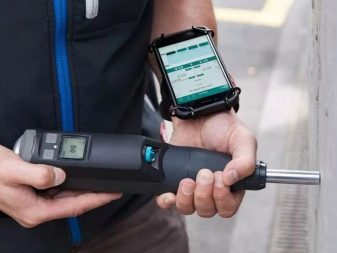
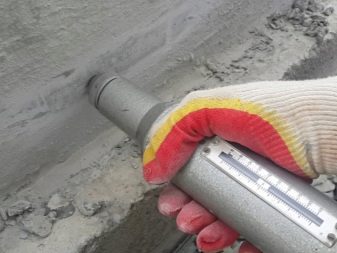
It is necessary to take measurements in areas with small dimensions. They are pre-drawn into squares and then examined one by one. Each of the strength readings must be recorded, and then compared with the previous ones. During the process, it is worth adhering to the distance between the beats of 0.25 cm. In some situations, the data that is received may differ from each other or be identical. From the results obtained, the arithmetic mean is calculated, while a slight error is possible.
Important! If, during the measurement, the blow hits an empty filler, then the obtained data are not taken into account. In this situation, it is necessary to carry out a second blow, but at a different point.


Varieties
According to the principle of operation, meters of the strength of concrete structures are divided into several subtypes.
- Sclerometer with mechanical action. It is equipped with a cylindrical body with a percussion mechanism located inside. In this case, the latter is equipped with an indicator scale with an arrow, as well as a repulsive spring. This type of Schmidt hammer has found its application in determining the strength of a concrete structure, which has a range of 5 to 50 MPa. This type of meter is used when working with concrete and reinforced concrete objects.
- Strength tester with ultrasonic action. Its design has a built-in or external unit. The readings can be seen on a special display that has a memory property and stores data. Schmidt's hammer has the ability to connect to a computer, as it is additionally equipped with connectors. This type of sclerometer works with strength values from 5 to 120 MPa. The meter's memory stores up to 1000 versions for 100 days.
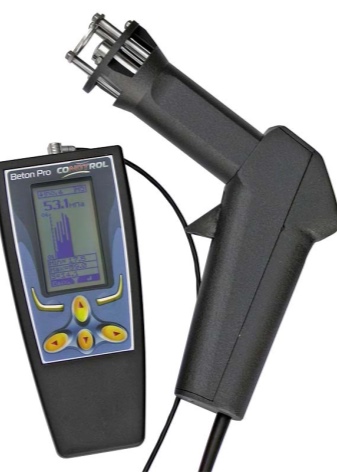
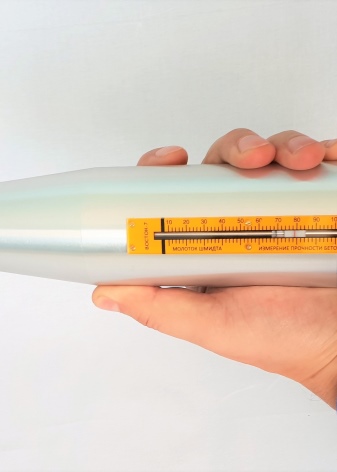
The force of the impact energy has a direct effect on the strength of concrete and reinforced concrete surfaces, so they can be of several types.
- MSh-20. This instrument is characterized by the smallest impact force - 196 J. It is able to accurately and accurately determine the indicator of the strength of a mortar from cement and masonry.
- The RT hammer works with a value of 200-500 J. The meter is usually used to measure the strength of first fresh concrete in screeds made from a mixture of sand and cement. The sclerometer has a pendulum type, it can take vertical and horizontal measurements.
- MSh-75 (L) works with blows of 735 J. The main direction in the application of the Schmidt hammer is the setting of the strength of concrete, which is characterized by a thickness of no more than 10 cm, as well as brick.
- MSh-225 (N) - this is the most powerful type of sclerometer, which works with an impact force of 2207 J. The instrument is able to determine the strength of a structure that has a thickness of 7 to 10 cm or more. The device has a measuring range from 10 to 70 MPa. The body is equipped with a table that has 3 graphs.



Advantages and disadvantages
The Schmidt hammer has the following advantages:
- ergonomics, which is achieved by convenience during use;
- reliability;
- no dependence on the angle of impact;
- accuracy in measurements, as well as the possibility of reproducibility of results;
- objectivity of assessment.
The meters are characterized by a unique design and high quality construction. Each of the procedures performed using a sclerometer is fast and accurate. Feedback from users of the device indicates that the hammer has a simple interface, and also performs all the functions it needs.
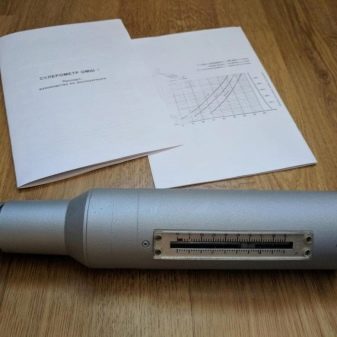

The meters have practically no disadvantages, the following characteristics can be distinguished from the disadvantages:
- the dependence of the amount of rebound on the angle of impact;
- the effect of internal friction on the amount of rebound;
- insufficient sealing, which contributes to a premature loss of accuracy.
Currently, the characteristics of concrete mixes entirely depend on their strength. It depends on this property how safe the finished structure will be. That is why the use of the Schmidt hammer is an important procedure that should definitely be carried out when erecting concrete and reinforced concrete structures.
You will learn how to use the Schmidt reel in the video below.













The comment was sent successfully.